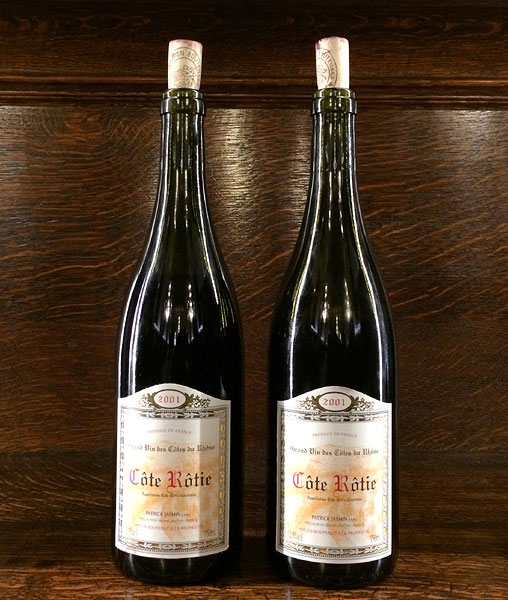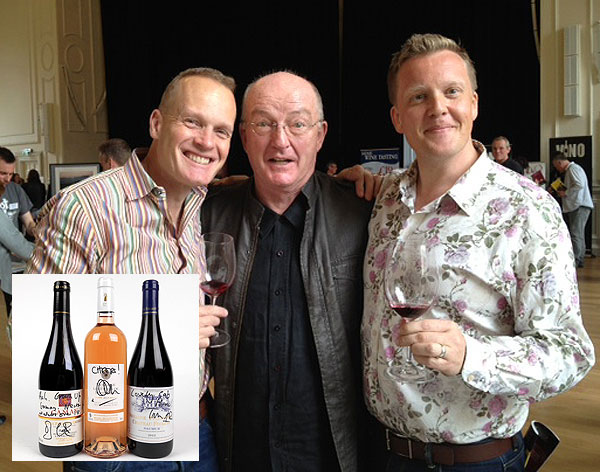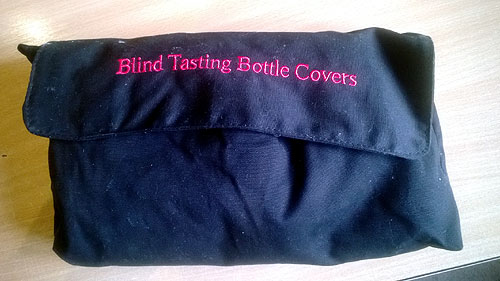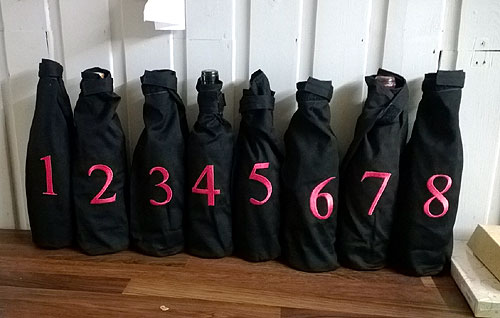One of the frustrating things about a career in the wine trade is that my family and friends are convinced that I spend most of my waking hours discoursing over fine wines in upmarket eateries while they are putting in hard graft at the rock face. It's very disheartening to return, exhausted, from a buying trip to be asked: How was your holiday? In mitigation, I do spend an inordinate amount of time browsing and sluicing under the guise of employment and I enjoy it wholeheartedly so thought I should share with you the six wines I've enjoyed the most recently.
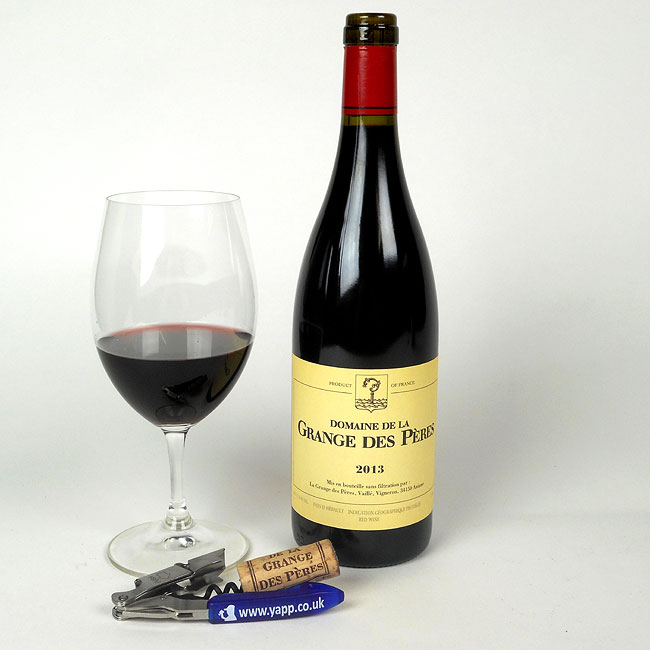
1. IGP Pays d'Hérault: Domaine de la Grange des Pères Rouge 2013
Having long-admired this masterfully-crafted blend of Syrah, Mourvèdre and Cabernet Sauvignon from the hills to the west of Montpellier we were delighted to be offered a parcel of the newly-released, and terrific, 2013 vintage from source. My euphoric tasting note read thus: "The 2013 Domaine de la Grange des Pères rouge is an object lesson in wine-making finesse and restraint. The finished wine is emphatically not a blockbuster but a harmonious blend containing all the key components of a 'Grand Vin' in near perfect proportions. The bouquet of ripe garrigue berries with delicate wild herb notes marries beautifully with a palate of soft red and black fruits, game, leather and spice the whole offset by a fresh acidity and supported by a structure of fine-grained tannins. It is already surprisingly approachable but should provide rewarding drinking for a further 10-20 years. Delightful!"
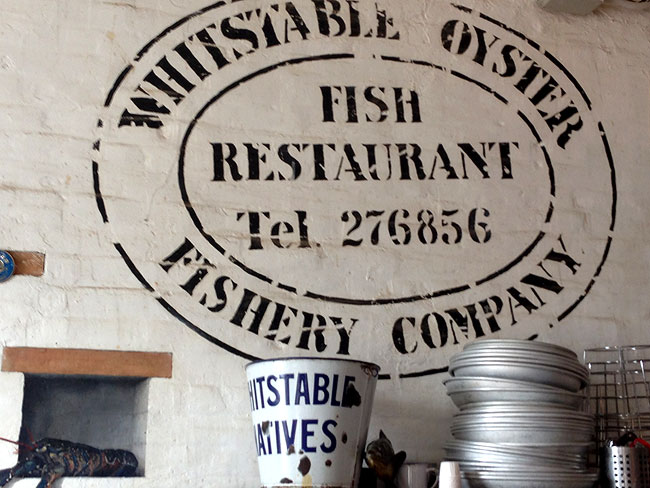
2. Condrieu 'Terrasses de l'Empire' 2014: Domaine Georges Vernay
Our good friend Angharad Renshaw-Green, patronne of the marvellous Royal Native Oyster Stores in Whitstable, has a penchant for Condrieu so we thought it churlish not to bring along a bottle of Christine Vernay's cracking 'Terrasses de l'Empire' 2014 when we visited to host a staff training session recently. We enjoyed this superb peach-scented, fruit-accentuated and beautifully-balanced Viognier with hot oysters 'Rockefeller' dressed with spinach, Emmental cheese and breadcrumbs - a heavenly combination.
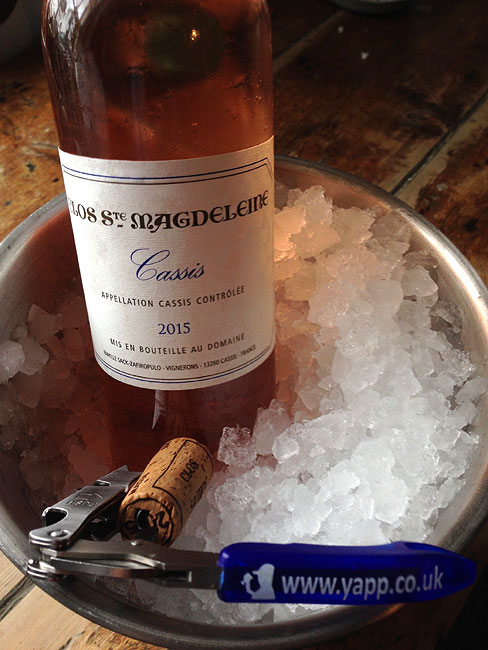
3. Cassis Rosé: Clos Sainte Magdeleine 2015 (magnum)
The Spectator's resident wine guru, Jonathan Ray, is both bossy and sociable and so when he demanded that I turn-up for dinner brandishing a seasonally appropriate magnum I jumped to with alacrity. My choice of a rosé Cassis was far from being the grandest wine of the evening but on a muggy mid-summer night it was wonderfully refreshing – brimming with bright berry fruit and offset by a fine acidity and inimitable Provençal herb notes, it was certainly well-received.

The irrepressible Jürgen Hofmann holds court!
4. Rheinhessen: Appenheimer 'Spätburgunder' 2013: Jürgen Hofmann
Last year my mentor on all things Germanic, Alison Flemming MW, introduced me to this magnificent Pinot Noir from Appenheim and it was love at first sip. Earlier this month she went one better and took me to the cellar door to meet the man behind it and it was one of the most insightful tastings I've ever attended. You need skill, luck and the right raw materials to make great wine but above all you need enthusiasm. Jürgen has this in spades and he is a wine-maker whose future output we will be tracking closely. Stacked with juicy, summer berry fruit over a frame-work of supple tannins this wine is delicious lightly-chilled served with charcuterie.

New cuverie at Domaine de Trévallon
5. IGP Alpilles: Domaine de Trévallon Rouge 2007 (magnum)
I think it's fair to say that Jürgen and I are kindred spirits in our appreciation of wine and no sooner did we get to discussing wine-makers we admired than he had pulled the cork on a magnum of Domaine de Trévallon in the marvellous 2007 vintage. I'm a big fan of Trévallon but it is very vintage sensitive and the 2007 must be a contender as one of the all-time best vintages. It's really harmoniously balanced with signature garrigue berry and forest floor scents and full, fruity palate supported by ripe tannins and a fresh acidity. Drinking beautifully now this should age well for at least another decade. Thanks Jürgen!
6. Arbois 'Vin Jaune' 2008: Domaine Jean-Louis Tissot (62 centilitre 'clavelin')
The restauranteur, print expert and keen oenophile Andrew Edmunds has a palate that is razor sharp and impossible to second guess. I tentatively gave him a glass of this barrel aged Savagnin to assay, unsure if he would love it or loath it – he is nothing if not opinionated. Vin Jaune can be a difficult wine for the uninitiated as it has a distinctive sherry-like bouquet and concentrated oxidative palate with a strong and persistent finish but happily it met with enthusiastic approval. Andrew averred that it would be 'terrific' with a chunk of 'well-aged, really crystalline parmesan' and I'm not going to disagree with him.
Great to see so many Yapp customers at our tasting at Vintners' Hall on Tuesday evening, many of whom gamely had a crack at identifying our blind wine. We never find blind tasting easy (indeed, it's often humbling), but it keeps one match-fit and focuses the mind.
The wine was Patrick Jasmin's Côte Rôtie 2001. Only one individual identified the appellation and they reckoned it was 2009 (which shows how well the 2001 has aged). Close, but no cigar - we'll send them a corkscrew as we're feeling generous! Several entrants thought the wine was Burgundy which isn't far off the mark as Patrick's Côte Rôtie has been described by Robert Parker as "the most Burgundian of the appellation". Here's Bob's tasting note on the wine itself which he scored 90-92/100:
"The 2001 Cote Rotie's deep ruby color is accompanied by explosive aromas of sweet raspberry fruit intermixed with a hint of apricots (7-8% Viognier is added to the blend). Well-delineated and floral, with a cherry/raspberry fruit component beautifully displayed, this medium-bodied 2001 is not a blockbuster, but it wins the taster over with its delicacy and finesse."
We also wrapped up our competition to win bottles signed by the 'Three Wine Men' Olly Smith, Oz Clarke and Tim Atkin.
Ms. Benson from Yorkshire receives the bottles as she was randomly selected from 'correct respondents'. There were five runners-up, and the answers were as follows:
- This Gamay is from the Ardèche, but which French region just north of Lyon is most famous for making wine with this grape? Beaujolais
- Côtes du Thongue is part of which vast wine region beginning with 'L' that runs from Arles to Perpignan? Languedoc
- Château Fouquet lies in the appellation of Saumur. What is the name of the neighbouring appellation where you can ONLY make red wine? Saumur Champigny
Watch these pages for more competitions and, in the meantime, more practice needed on your blind tasting!
The Broughton Gifford Wine Club (the BGWC) meets fairly sporadically but meets all the same as it’s an excuse to get everyone out for an evening, break the routines – and, well, eat, drink and be merry.
Normally there’s a theme – we’ve journeyed along the Rhône (although we’d did it south to north not the way the river flows), we’ve tasted al fresco (a camp site in Sidmouth, where we focussed on rosé wine) and other themes as and when they’ve come to us.
This weekend we ventured down blind tasting, where we pitched Yapp staples against supermarkets – I provided the Yapp wines, other folk pitched in with the others. Always happy to ‘compare and contrast’ we divided up the booty and went head to head with Minervois, Clarets, Côtes du Rhône and Châteauneuf du Pape.
Although it was a little like herding kittens, and with hindsight I’d have been better prepared if I’d known what swerve balls might swung from the supermarket camps, it was great fun and enjoyable. Yapp wines thankfully showed well against the opposition (the Minvervois took the Sainsburys offering in it’s stride without flinching) – and as with in all things in life, there was no universal winner but it triggered debate (I think that’s putting in politely enough!)
Our next gathering in scheduled after the start of BST, so we plan to push the fizz and see where that little adventure may take us.
If I had a pound for everybody who told me that they would like my job I wouldn’t need a sodding job and I could fulfil my destiny of becoming an international playboy – a role for which my forebears, rather short-sightedly, failed to provide adequate funds. Members of the general public naïvely assume that I spend ALL of my time sampling France’s vinous treasures and scoffing haute cuisine in high-end restaurants. Well, I do devote many hours to those activities but there are numerous more irksome aspects to being a wine merchant that never occur to the person cutting your hair or mixing your cocktail. Fielding phone calls from stroppy customers being a fine example. Only this morning an ennobled captain of industry threw a hissy fit and withdrew his custom because we were unable to furnish him with an astonishingly rare Northern Rhône Syrah. Tant pis – into each life some Grenache must fall.
Writing our annual wine list is another Herculean task that I wouldn’t wish on my mortal foe. I’d rather muck-out the Augean Stables any day. The problem isn’t writing about wine per se it is trying to come up with fresh angles on the same old same old. The whole thing has become like Groundhog Day and I find myself referring to ‘ozone fresh Muscadet’ and ‘briary, chest-thumping Côtes du Rhône’ on some kind of ghastly auto-pilot that it’s impossible to disengage.
Few people credit it (barring critics and fellow vintners) but one can soon pall of fine dining if over-exposed to it. Like sex and drugs and rock and roll a surfeit can be worse than a deficiency. I am put to mind of the prisoners in Essex, Massachusetts who rioted in reaction to their invariant diet of lobster, and people who work in chocolate factories seldom take their work home with them. There are times when all one desires is a cup of tea and some hot-buttered toast and not a reduction of Jerusalem artichoke purée served with a tempura of hand-picked scallops on a bed of lambs lettuce and Perigord truffles.
Tasting wine all day is also a joyless experience. After a couple of hours the flavours start to meld in your mind until it is only the really weird offerings that register. Your teeth become blackened by juice and your tongue becomes furred with tannins and your faculties start to fade – it’s no wonder that so many wine journalists are semi-certifiable.
The area about which wine-muggles are most deluded is that of the wine buying trip. By day four or five the endless offerings of pieds de cochon, rillons, rillettes, tête de veau and pot au feu coupled with incessant par-fermented vat samples of unfinished wines can really take their toll. There is almost nothing less-pleasant than having to feign interest and maintain the sang froid in the face of a full-blown Gallic gastric crise. Indeed, it was only my latent triple-jumping skills and a providentially located toilette that saved me from disgracing myself at a very distinguished Château.
If you want my job you can have it – I’m going to re-train as a masseur!
(This article first appeared in Country Calling, 15/06/2011)
The final leg of our buying trip begins in Faugères, an up and coming AOC that sits atop an impressive bedrock of schist, north of Beziers. Château des Estanilles is an estate that has recently changed hands and the good news is that the pioneering work of Michel Louison is being augmented by Julien Seydoux, an enthusiastic and independent-thinking young chap whose family have substantial vine-holdings in Costières de Nîmes. Julien is motivated to make the best possible Faugères and has invested blood, sweat, tears and a fait bit of dosh to make this happen. His 2010 vintage which we will ship in May will be certified organic, a rapidly growing phenomenon among ‘Yapp’ producers.
Our next visit of the day entailed a 3 hour drive across the Languedoc to the pretty Provençal village of Lambesc where Sebastien Ambrosio Collomb gave us a tour of Domaine Oullières and we tasted through his very good white and rosé 2010's, along with his ‘house’ red 2009 (a Cabernet Sauvignon, Grenache, Syrah blend) – all three will feature in our forthcoming 2011 wine list. This estate is also ‘en conversion’ to organic and will gain certification in 2012.
Finally, and after a further 3 hours schleping across Provence and negotiating the Nice rush hour, we arrived at our final tasting of the trip. Domaine de la Source in AOC Bellet, the smallest domaine with which we work, is now run by energetic brother and sister team Eric and Carine Dalmasso. They have doubled the size of the area under vine in the past five years to a whopping 5 hectacres! Somehow, from this tiny patch of vines perched between the Cote d’Azur and Southern Alps, they successfully manage to produce a red, white and rose – total production 15,000 bottles. 95% of the wine is consumed by well-heeled Niçois chez eux or in the fashionable restaurants of Vieux Nice, but the remaining pallet finds its way to Mere (we are their sole export customer). We would encourage anyone that hasn’t sampled these fascinating wines to give them a try – preferably sur terrasse with porchetta nicoise, grillade au fenouil or wood-oven roasted rabbit with thyme. Oh, by the way, did we tell you that next year Domaine de la Source will be certified organic?!
After a hugely informative, if fairly exhausting, visit to the Salon des Vins de Loire we headed south to Bordeaux for a spot of castle-creeping with the Baron and Baroness d’Anglade at Chateau d’Abzac. As any fule kno, it is relatively easy to source good, classed growth Bordeaux but you get what you pay for. What is considerably more difficult is to find well-made inexpensive Claret for gratifying every-day drinking. Some well-informed and well-wishing expatriates had put us in touch with the d’Anglades and early negotiations have been fruitful – this is not a frequent occurrence as 9 out of 10 third party recommendations disappoint. Merlot is the dominant grape here which thrives on gravelly soils, similar to nearby Pomerol. We were very impressed with the wines which are fresh, forward-drinking and sensibly priced. We hope to ship an inaugural order in the near future so watch this space for an update.
Heading South and East, via a chilly overnight stop in Agen, our arrival in Limoux co-incided with our first glimpse of sunshine, illuminating the snow capped peaks above Philippe Collin’s twenty hectare estate - Domaine Collin. Since moving down to this Cathar region from Champagne in 1980, Philippe has honed his art of producing great value Méthode Traditionelle Crémant de Limoux fizz from Chardonnay and Pinot Noir grapes. It is gratifying to meet winemakers who get on with doing what they do best, without pretension or distraction.
The cross country drive from Carcassonne to Minerve flanks the Canal du Midi and takes in some gorgeous scenery, which must be even more impressive viewed from a barge. Minerve itself is officially Un des plus beaux villages de France. We won’t argue with that, but even in the sunshine the Tramontane wind was biting. Claude Derroja of Domaine Le Cazal gave us a warm welcome and tour of his vines, including the breath-taking Pas de Zarat gorge which would be a tourist trap in any more accessible location. A comprehensive tasting of Claude’s Syrah, Grenache and Carignan blends confirmed that the 2009 and 2010 vintages are superlative. We are beginning to get the message here. Having secured generous allocations of both, we took to the road for Béziers where whoever wrote the entry for the Hotel Imperator in our guide deserves suing! The only thing for it is a restorative bowl of Cassoulet and a bottle of Faugères at the Cep d’Or.
The annual Salon des Vins de Loire takes place at the end of January takes place in the unprepossessing but functional Parc des Expositions in Angers and is always an informative affair. While a mid-winter gathering is convenient for winemakers, it can make for a chilly and challenging tasting programme for visitors. This kind of event, although not in the most romantic of settings, provides a useful opportunity to catch up with a host of suppliers under one roof, taste a hundred or so wines per day and get a good insight into recent vintages.
Monday morning found our vigneron friends in upbeat mood, delighted to be showing terrific back to back vintages. Hot on the heels of the universally acclaimed 2009, the 2010 wines appear to be as good, if not better. Rich whites and full-bodied, fruity reds were the order of the day. We left the Fair enthused with the high quality and broad range of wines on show, confident that forthcoming releases will be well received back in Blighty. From the nervy, young Sauvignons of the Central Vineyards to the steely Chenins of Anjou, via the supple Cabernet Francs of Touraine, these were crowd-pleasing wines of charm and accessibility that offer great value for money.
After a long day’s tasting, tonight we look forward to rilletes, os à moelle and other delicacies of Saumur with our old friends Fred & Laurence of Domaine Filliatreau before heading south, where we hope the daytime temperature will rise above zero!
We’ve been hosting Autumn wine tastings for the Oxford and Cambridge colleges for many moons. On my very first venture to Oxford 10 years ago with Robin (Yapp), no sooner had we set up the tasting in preparation for the arrival of the dons than he rushed me off to the Covered Market to seek out the excellent gamebutchers, Hedges. Our business there concluded, we hot-footed it back towards Wadham for 11.30 with a brief detour via The White Horse in Broad Street for a couple of pre-tasting pints of Greene King IPA. As an introduction in how to approach a wine tasting at this fine seat of learning, it took some beating.
So as the temperature dropped at the end of September and our green and pleasant land exploded in vivid russet and orange, my thoughts invariably turned to Messrs Hedges and the Covered Market. This year, I plumped for a couple of grouse, a brace of pheasants and multiple partridge. “You like game, then?” Hedges Junior enquired, unnecessarily I have to say. Back at the tasting, via a coffee shop rather than The White Horse (in case my wife reads this), I had my eye on several bottles that I thought might not get consumed during the duration. This is a discreet perk of all wine tastings, how else can one afford to drink on the wages of this industry? So my grouse was preceded by white Chateauneuf-du-Pape Vieux Donjon 2008 and perfectly accompanied by Cornas Clape 2006.
There are few wine tasting venues that can match the regal splendour of Vintners’ Hall in the City of London and we are inordinately grateful to the Vintners’ Company for allowing us to visit periodically. Bedecked in oak panelling and dazzling with silverware amassed over 6 centuries this is a great setting for a wine tasting especially when the wine makers themselves are present.
On Monday evening last week 6 of our long-serving (possibly long-suffering) suppliers joined us in London to show off their wares.
Laurent Bunan, from Domaines Bunan in Bandol, was showing off his superb white and rosé wines which are little-known on these shores but are hugely popular on the terraces of the Côte d’Azur; where they make an ideal accompaniment to freshly caught seafood. Laurent also exhibited a brace of Mourvèdre-based reds. The Mas de la Rouvière 2004 is beginning to soften with bottle-age and is packed with briary, hedgerow fruit that puts one in mind of warming stews and braises. Laurent’s flagship ‘Cuvée Charriage’ is a belting great blockbuster – approachable now, if decanted, but a wine that will mature well over a further 5 years.
At the neighbouring table Christine Campedieu was dispensing samples of her inimitable Collioure. Her white ‘Les Canadells’ is blended from 70% Grenache Gris and 15% each of Grenache Blanc and Macabeau. It is slightly resinous with wild herb notes and a long, elegant finish – enough to transport one to the Catalonian coast at sunset as the waves lap against the shore... Christine’s red wines named ‘La Pinède’ and ‘Puig Oriol’, after the vine plots, are blended from Grenache mixed with Carignan and Syrah respectively. Both have a strong sense of terroir and a fine concentration of fruit. I thought the ‘La Pinède’ was the slightly more forward drinking of the two but if I can convince ‘her indoors’ that the kids don’t need new winter coats I might invest in both for the Cave Personelle. Not to be overlooked is Christine’s seductive, sweet, dark Banyuls Réserva. It is infused with complex raisin and fig flavours and is one of very few wines that can cope well with chocolate – or Christmas pudding for that matter.
Patricia and Olivier Luneau met at wine school in Beaune and honed their craft in New Zealand. They run a forward-thinking vineyard in Mentou Salon producing fruit-accentuated wines of enormous charm. Simon Hoggart recently described their Menetou Salon Rosé wine in the Guardian as being: “So delicious – fruity and rich and round and yet with a real strength.” Their white wine, made from pure Sauvignon, was also showing very well in the current 2009 vintage. They must have mixed feelings about that as they lost three-quarters of the potential harvest to summer storms - fortunately they’ve generously agreed to uphold our usual allocation. Patricia and Olivier were also exhibiting their delightful red Menetou Salon Pinot Noir that has a bright berry-scented bouquet and a savoury palate of ripe red fruit and supple tannins. It would make a splendid partner to a plate of charcuterie or crusty bread and a good coarse pâté.
Bruno Ribière, who has the privilege of working with small parcels of ancient vines in the Roussillon, drew quite a crowd with his characterful range of wines that are incredibly evocative of their sun-kissed locale. Encouragingly, Master of Wine (and aide-de-camp to Jancis Robinson OBE) Julia Harding even put in a personal order for some of Bruno’s dry white Catalan Grenache. It is highly distinctive with an almost sherry-like palate and a long, mineral-edged finish. Bruno is equally well known for his dark, earthy, reds as testified to by a trio comprised of a brooding Carignan (from 130 year-old vines), a rugged Côtes du Roussillion ‘Cuvée Tradition’ and his dense, age-worthy ‘Cuvée Cana’.
Our only ‘no show’ of the evening was young Nathalie Margan from Château la Canorgue on the Montagne de Luberon. Sadly Nathalie was laid low by a virus on the eve of our tasting and was unable to join us. Fortunately her wines spoke for themselves and were well received in her absence. Château la Canorgue has pioneered organic viticulture since Nathalie’s father Jean-Pierre first set up here in 1978. Their white Côtes du Luberon, blended from Rhône staples Grenache, Clairette, Roussanne and Marsanne is grown at quite a high elevation and is fresher and zestier than most. Their delicious coral-pink Luberon rosé wine (from a blend of Grenache, Cinsault and Syrah) is also clean, crisp and palate cleansing – it works well with or without food. An intriguing Vin de Pays called ‘Béret Frog’, made from (almost) pure Syrah (with a notional dash of Grenache) drew the attention of veteran wine scribe Malcolm Gluck who observed: ‘Plump yet very gripping tannins provide solid buttressing to svelte, mellow fruit.’ The more senior Château la Canorgue red (40% Syrah, 30% Grenache and 30% Carignan) has more complexity and length but reflects the same diligence and skill in the cellar and will be drinking well this winter.
Last but by no means least we were delighted to welcome Emilie Boisson from the acclaimed Domaine du Père Caboche in Châteauneuf-du-Pape. Emilie and her father Jean-Pierre (who is serving his third term as mayor of the town) produce a fresh, racy, consistently pleasing white Châteauneuf-du-Pape from a blend of 40% Roussanne and 20% each of Grenache Blanc, Bourboulenc and Clairette. It is vinified in stainless steel and the malolactic fermentation is blocked by a combination of chilling and filtration. It is one of few whites from the appellation that is zesty enough to be drunk comme aperitif and is a personal favourite. The Boissons, however, are best known for their Grenache-based red wines that have been described variously as ‘sexy’, ‘seductive’, ‘hedonistic’ and ‘voluptuous’ (you get the idea) by no lesser personage than Robert Parker. The entry level ‘Petit Caboche’ is a cracking Vin de Pays, packed with red berry flavours over supple ripe tannins. It is a failsafe ‘crowd-pleaser’ for dinner parties and people suffering withdrawal symptoms from Downton Abbey. ‘Château la Côte’ is a precocious, (new to us) fruit-accentuated Côtes du Rhône Villages in the awesome 2009 vintage that proved very popular on the night and is a shoo-in for our next annual list. 2007 was a historic vintage in Châteauneuf’ so it was a treat to taste the Domaine du Père Caboche red which is drinking really well right now with a lovely warming palate of black berries and cherries and subtle briary undertones. I managed to cajole a swan-song 100 magnums from Emilie when she was still on a post tasting high - if you’re wondering what to drink this Christmas you could do far worse. Finally we finished the evening sampling the flagship ‘Cuvée Elisabeth Chambellan’ again in the magnificent 2007 vintage. It is deeper and darker than the ‘regular’ bottling and comes from 100 year-old vines on La Crau plateau. It made for a terrific finale to a wonderful evening. The general consensus from all parties being that we should do that more often!




